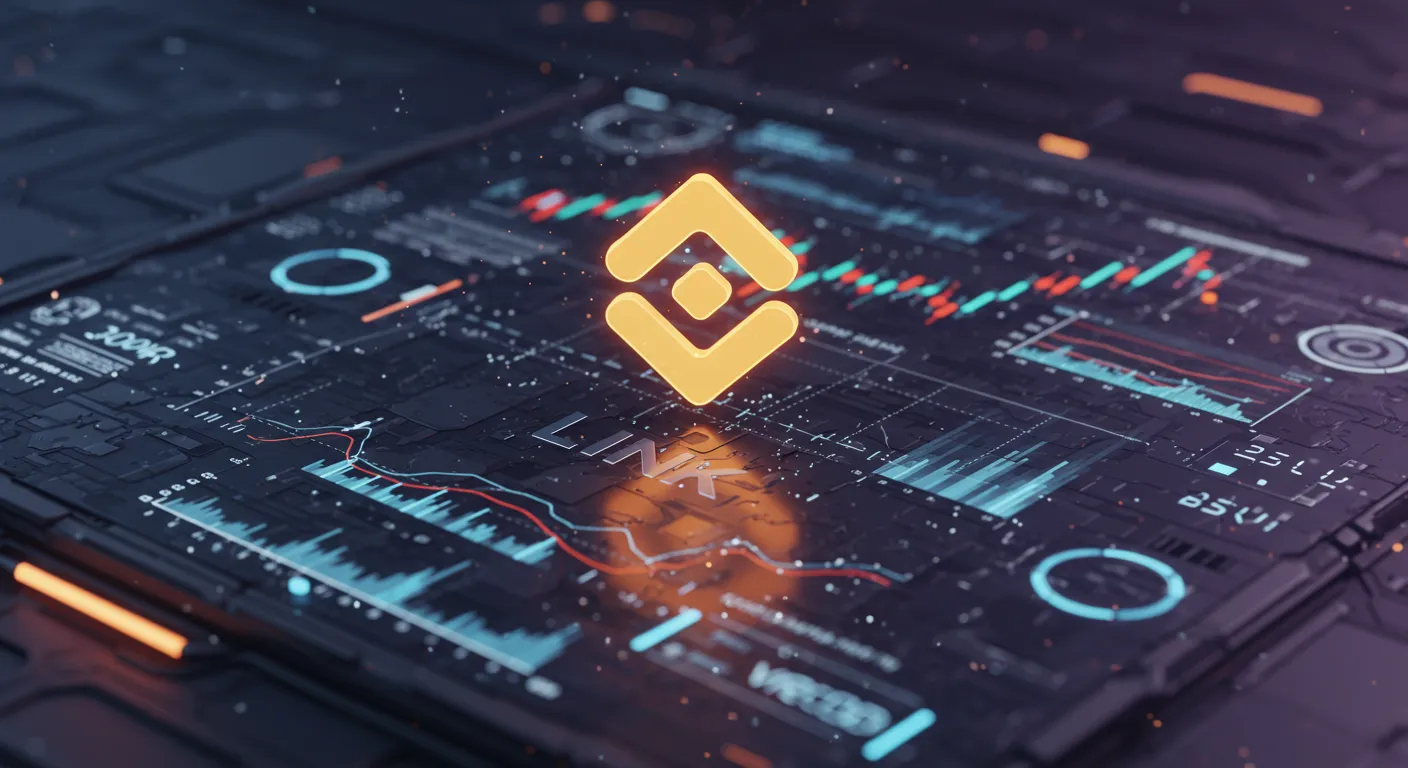Chainlink Oracles: Why They Are the Backbone of DeFi and the Engine of Data Security
Decentralized Finance (DeFi) has emerged as one of the most revolutionary innovations of Web3, but this massive, complex ecosystem, built on top of smart contracts, faces a fundamental paradox: Smart contracts are inherently limited in that they cannot access real-world (Off-Chain) data on their own. This is where the Chainlink Oracle Network steps in. Chainlink oracles do more than just supply data; they act as the "backbone" and "security bridge" that protect billions of dollars in Total Value Locked (TVL) across DeFi protocols from manipulation and systemic failure. In 2025, understanding Chainlink's vital role is paramount, not just for developers, but for any informed investor seeking to assess the underlying security risks of the DeFi landscape.
What Are Chainlink Oracles? The Guarantor of Secure, Decentralized Data
Chainlink Oracles are secure intermediaries that transmit essential external data (such as asset prices, interest rates, stock indexes, or election results) onto blockchains for consumption by smart contracts. Why is this critical? If a DeFi lending protocol (like Aave) relies on a single, centralized price feed to determine when to liquidate a loan, that single source can be easily compromised or manipulated, leading to a catastrophic loss of capital. This vulnerability is known as an "Oracle Attack" or "Price Manipulation."
Chainlink solves this existential problem through a multi-faceted approach:
1. Decentralized Data Aggregation: Chainlink utilizes a network of hundreds of independent oracle nodes that collectively gather data from dozens of premium data sources. This data is then aggregated and weighted to create a single, Tamper-Proof Price that is highly resistant to manipulation.
2. Economic Security via the LINK Token: Chainlink Oracle Nodes are required to stake LINK tokens as collateral to guarantee honest service behavior. This collateral acts as an economic shield; if an oracle node delivers malicious or incorrect data, its staked LINK is subject to Slashing (penalty). This powerful financial incentive guarantees data integrity.
3. Cross-Chain Interoperability Protocol (CCIP): Chainlink has extended its role from a data provider to a secure communication layer between blockchains via the CCIP. This enables smart contracts to use not only off-chain data but also data and tokens from other blockchains, increasing their complexity and utility.
This architecture positions Chainlink as a unique solution that not only provides the necessary data but also offers a cryptographic and economic security guarantee for that data.
Chainlink’s Pivotal Role in DeFi and Beyond
Chainlink’s function in DeFi is not merely an optional feature; it is the structural component that injects stability and trustworthiness into critical protocols:
1. The Heart of Lending Protocols: Lending protocols like Aave and Compound fundamentally rely on Chainlink's real-time price feeds to execute auto-liquidation of undercollateralized loans. A delay or error in price data can lead to systemic bad debt, jeopardizing the entire protocol. Chainlink Oracles ensure the instantaneous and secure execution of this most vital function.
2. Synthetic Assets and Derivatives: Platforms like Synthetix that create synthetic assets (tokens representing gold, stocks, or fiat currencies) are entirely dependent on Chainlink's price feeds to securely peg the synthetic token's value to its real-world counterpart. Without this secure connection, the synthetic assets lose their financial validity.
3. Real-World Asset (RWA) Tokenization: In 2025, one of the biggest market trends is the tokenization of traditional assets like treasury bonds and real estate. Chainlink is a crucial component for providing Proof-of-Reserve (PoR) and the requisite price feeds for these assets. This expands LINK's addressable market to the trillions of dollars in the traditional financial sector.
4. Decentralized Insurance and Gaming: Chainlink is also utilized for automatically executing decentralized insurance contracts (e.g., Nexus Mutual) based on verified real-world events and for generating Verifiable Random Function (VRF) in blockchain games and NFTs. This diversification reinforces Chainlink's monopoly on supplying "trust" to Web3.
How to Track and Investment Strategies
For investors, understanding Chainlink’s infrastructural role is key to smart portfolio allocation:
* Tracking Total Value Locked (TVL): Use platforms like DefiLlama to monitor the TVL in DeFi protocols that utilize Chainlink Oracles. A consistent increase in this TVL is a direct fundamental indicator of LINK's underlying growth.
* Monitoring LINK Demand: Track the number of protocols and chains integrating Chainlink Oracles and CCIP. Since fees for these services are paid in LINK, increased utility directly boosts the structural demand for the token.
* Technical Analysis: Use technical tools like RSI and Bollinger Bands to identify strategic entry and exit points. LINK is a fundamental asset with high volatility; long-term patience and a deep understanding of its fundamentals are the most important factors.
Investment Strategy:
1. HODL and Staking: Buy and hold LINK with a long-term, infrastructural view. Staking LINK not only earns passive yield but also strengthens network security. This converts a passive holding into a yield-generating asset.
2. Investment in Consumer Ecosystem: Invest strategically in Tier-1 DeFi protocols (like Aave) that heavily depend on Chainlink. The success of these protocols indirectly accrues to LINK’s value, providing a double leverage to the ecosystem's growth.
Challenges and Competitive Risks
Despite its dominance, Chainlink faces challenges. Competitors like Band Protocol and Pyth Network are attempting to offer cheaper or native oracle solutions. Chainlink must maintain its relentless innovation, particularly in reducing operational costs and expanding its CCIP to all Layer 2 blockchains.
Smart Contract Risk: The biggest risk is not Chainlink itself, but flaws in the smart contracts that *consume* its data. Chainlink guarantees correct data, but a bug in the consuming protocol's code can still cause loss. This underscores the need for rigorous security audits for all DeFi projects.
Final Conclusion: Chainlink Oracles are the beating heart of DeFi and the master key for bringing real-world assets onto the blockchain. Without Chainlink, DeFi cannot scale securely or reliably. In 2025, Chainlink's role as the global trust layer for the Internet of Value is solidified, making it one of the strongest fundamental players for long-term, infrastructure-focused investment.

